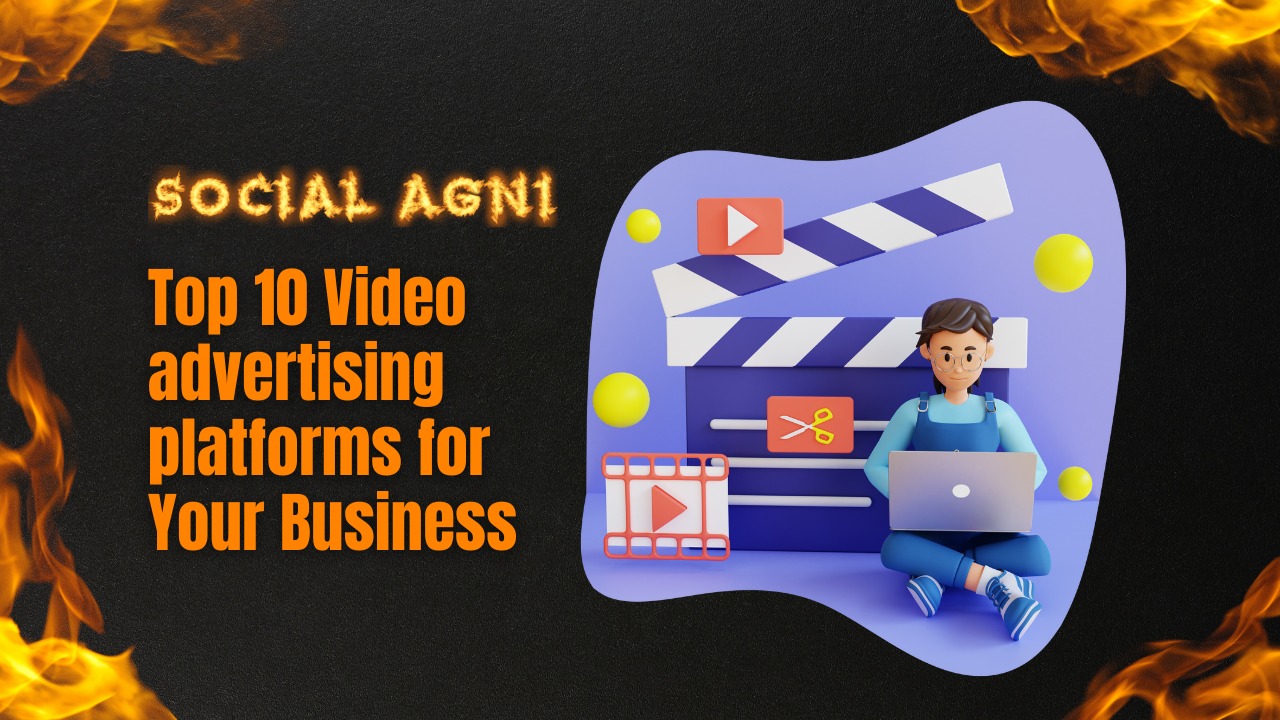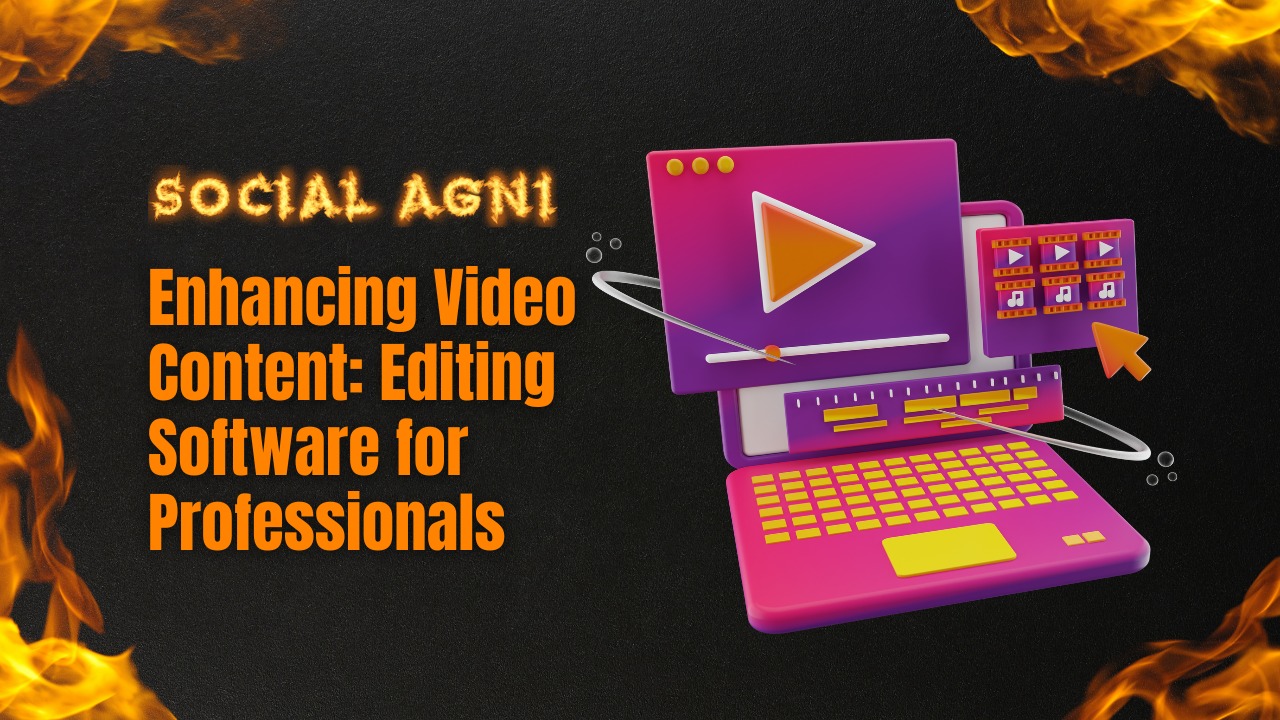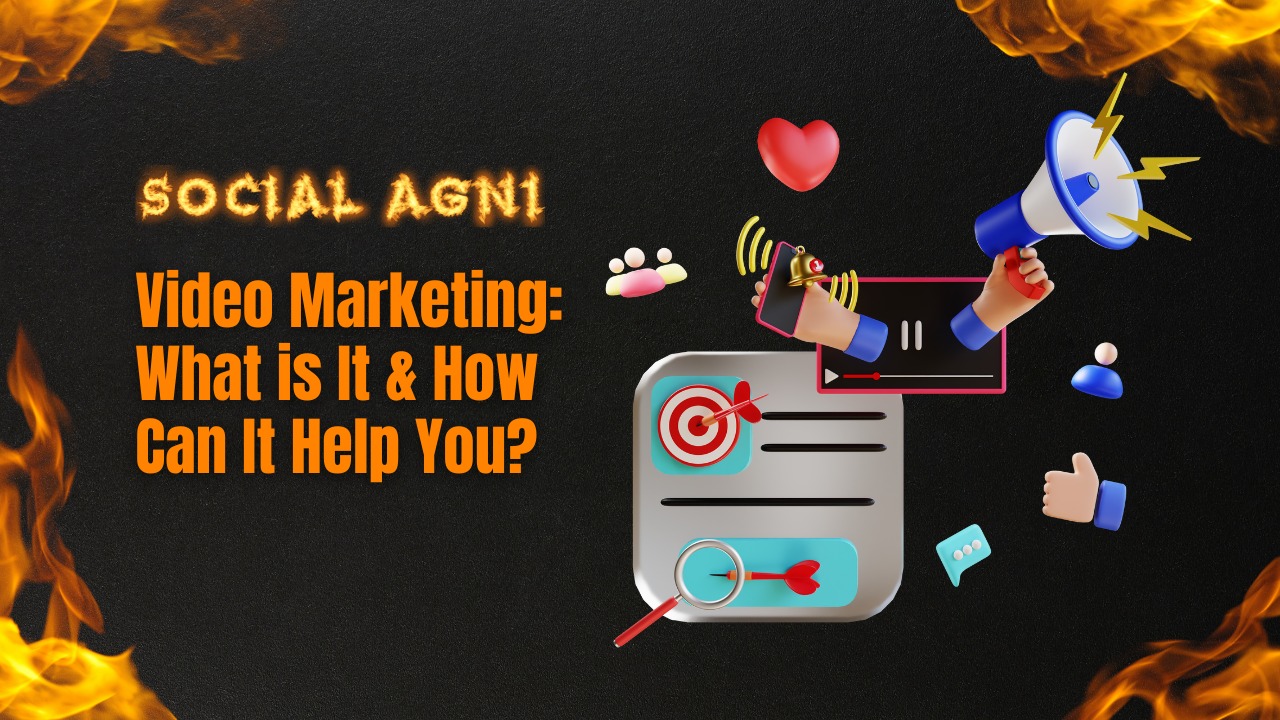Video advertising has become a great tool for organizations to engage target audiences and generate conversions. Online video consumption and social media platforms have made video commercials a marketing standard. They may aesthetically and emotionally engage viewers and leave a lasting impression. This article’s top 10 video advertising platforms give businesses several ways to promote their goods and services. These platforms have effective video ad campaigns and strong functionality to help firms reach their marketing goals. YouTube dominates video advertising. YouTube is the world’s second-largest search engine. It offers TrueView, bumper, and masthead advertisements for customizable, engaging campaigns. YouTube also offers precise targeting and advanced analytics to optimize ads and campaigns. Facebook, another social media giant, has a huge user base and extensive video ad targeting. Businesses can reach their target audiences and convert with in-feed videos and Stories advertisements with strong engagement rates. Facebook Ads Manager improves video ad campaigns with granular audience information. Businesses targeting younger audiences like Instagram’s aesthetically attractive and participatory environment. Businesses may engage customers with captivating video advertising embedded into feeds and Stories. Ad types and targeting choices maximize campaign effectiveness on the platform. LinkedIn is better for B2B marketing since it targets professionals. LinkedIn video advertising help companies build thought leadership and connect with decision-makers. Using job titles, industries, and firm sizes, the platform targets advertising to the right people. Businesses may employ short video advertising on Twitter, known for its real-time nature and wide reach. Businesses may reach and engage platform users by targeting certain interests and demographics. TikTok, a platform for short-form video content, has grown rapidly, particularly among younger users. TikTok’s large user base and innovative content forms including in-feed videos, customized effects, and hashtag challenges allow brands to generate viral video commercials. Snapchat’s fleeting nature allows marketers to produce unique, engaging vertical video commercials. Businesses can target specific audiences and monitor video ad success using Snap Audience Network and Snap Pixel. Vimeo, however, provides a high-quality, ad-free environment for creative brand promotion. For polished and professional video experiences, it lets businesses customize their video player, add calls-to-action, and get precise data. Wistia hosts customizes, and generates leads for videos. It integrates with marketing automation and CRM systems to let organizations of all sizes generate and distribute video content. Wistia’s features help organizations increase brand recognition and lead through compelling video experiences. Vungle is a top mobile app advertising and monetization platform for businesses targeting app consumers. Vungle helps businesses optimize their video ad campaigns in the mobile app ecosystem with smart targeting and performance data. YouTube YouTube is the premier video advertising platform for businesses, reaching more adults aged 18-49 than any cable network in the US with over 2 billion monthly logged-in users. YouTube, the world’s second-largest search engine, gives a unique chance to reach a huge audience and market products and services through video commercials. Massive User Base and Global Reach: Businesses looking to expand their reach find YouTube appealing. YouTube’s broad audience lets marketers focus their video adverts. YouTube’s global reach means your video adverts may reach millions of viewers globally. Variety of Ad types: YouTube offers many ad types for different advertising aims and user preferences. TrueView, a popular ad style, lets viewers skip the ad after a few seconds, guaranteeing marketers only pay for interested viewers. This style pushes marketers to provide engaging content in the first few seconds. Businesses can also use bumper advertising, which are non-skippable, six-second video ads on YouTube. Masthead adverts on YouTube’s homepage are highly visible. Targeting and Analytics: YouTube offers powerful targeting features to assist businesses target their video ads. Targeting through demographics, interests, keywords, and placements helps advertisers reach relevant viewers who are more inclined to interact. YouTube Analytics and Google Ads reporting track video ad performance. Views, engagement, click-through rates, and conversions help advertisers optimize their campaigns and make data-driven decisions. YouTube’s dominance in video advertising, large user base, numerous ad formats, accurate targeting choices, and comprehensive analytics tools make it essential for firms wishing to employ video ads. Businesses can reach a vast audience, enhance brand recognition, and achieve tangible outcomes by creating entertaining video content and using YouTube’s capabilities. Facebook Video Ads Businesses may exhibit their video advertising and reach a large audience on Facebook, which has over 2.8 billion monthly active users. Businesses wishing to maximize video ad campaigns can use Facebook’s sophisticated advertising capabilities and vast targeting possibilities. Popularity and High Engagement: Facebook’s popularity makes it a popular video platform. Autoplaying news feed videos engages users. Facebook video advertising may go viral by generating likes, comments, and shares, multiplying their reach. Variety of Ad types: Facebook provides many video ad types for different campaign goals and audience preferences. In-feed video advertising merges with real material in consumers’ news feeds, grabbing their attention as they scroll. Full-screen story advertising is visually engaging. Carousel video advertising and collection advertisements let businesses exhibit several items or create an interactive narrative experience on Facebook. Targeting and Detailed Audience Insights: Facebook advertising has excellent targeting. Video advertising may target demographics, interests, behaviors, and even bespoke audiences derived from consumer data. Facebook’s targeting tools let companies show their video advertising to viewers who are more likely to be interested in their products. Facebook delivers demographics, interaction analytics, and ad performance statistics to help businesses improve their targeting and video ad campaigns. Businesses could exploit Facebook’s enormous user base, strong engagement rates, numerous ad formats, accurate targeting choices, and extensive audience information for video advertising. Businesses may increase brand awareness, user engagement, and marketing goals by developing engaging video content and using Facebook’s advertising options. Instagram Video Ads Instagram, with over 1 billion monthly active users, is a prominent visual content platform that companies can utilize to successfully interact with their target audience through video advertisements. Visual Appeal and Younger Demographics: Instagram’s visual appeal and focus on aesthetics appeal to businesses trying to promote their brand through video advertisements. Instagram’s younger user base allows for millennial and Gen
In today’s digital world, when video material rules online communication, the ability to make appealing and professional-looking films is essential. Video editing software helps content creators, marketers, and filmmakers improve their videos. These powerful tools let experts turn raw videos into polished, captivating visual masterpieces. Video editing software is crucial. It lets professionals easily merge and arrange video segments, add transitions, and effects, and optimize visual aesthetics. Professionals may successfully communicate their message with seamless and lively storytelling using video editing software. Professional video editing software’s powerful editing capabilities and effects are a major bonus. These software tools help professionals improve their movies with color grading, correction, motion tracking, and special effects. Professionals can produce spectacular, engaging videos by controlling every component of the video. Video editing software must support numerous file types. Professionals deal with several video formats and codecs, thus software that supports many formats makes importing, editing, and exporting videos easy and high-quality. High-resolution, 4K movies are in demand as technology progresses. Top video editing software supports high-quality footage and lets pros create spectacular material. Video creation requires speed. Professionals may save time and costs with efficient rendering and exporting video editing software. Professionals can focus on creativity and fulfill deadlines without losing quality with improved processes and fast rendering times. Professional video editing software must be user-friendly and intuitive. The program should make editing, navigation, and tool and effect access straightforward. Professionals love editing using drag-and-drop and configurable interfaces. Professional video editors also consider software and plugin integration. Professionals may use complementing technologies and increase software capabilities with seamless integration, streamlining productivity. Integration with Adobe Creative Cloud or third-party plugins improves editing and expands creative possibilities. We will examine some of the best professional video editing tools in the following parts. Professionals use these software solutions because of their strong features, user-friendly interfaces, and high performance. Professionals may elevate their video material and create an impression with these software solutions. The Importance of Video Editing Software Video editing software is crucial in the digital age of online video. Video editing software helps pros create spectacular and compelling films from raw material. Professionals use video editing software for various reasons Video Editing’s Role in Content Creation Video editing involves arranging and altering video segments, adding visual effects, transitions, and audio upgrades, and optimizing the content’s presentation. It helps professionals tell intriguing stories and create certain emotions. Video editing is more than just cutting and pasting clips—it tells a story. Professional Video Editing Software Benefits Professional video editing software offers many tools and effects to improve video aesthetics. These software tools let professionals make visually stunning films with complex motion graphics, visual effects, and color grading. Video editing software’s easy interface and simplified workflow help pros edit quickly. Timeline-based editing, drag-and-drop, and keyboard shortcuts let professionals operate efficiently. Professional video editing software gives consumers complete control over their recordings. Professionals may adjust video speed, audio levels, visual effects, and transitions to meet their vision. Many video editing software alternatives allow numerous experts to work on the same project. These features streamline collaboration, feedback, and version control. Video Quality and Audience Engagement Audience engagement and perception depend on video quality. Video editing software improves images, audio, and transitions. Engaging, high-quality videos enhance watch duration, audience retention, brand exposure, conversions, and business outcomes. Key Features to Look for in Video Editing Software Professional video editing software should include critical features that improve editing and efficiency. Key aspects include sophisticated Editing Tools and Effects Professional video editing software should include many sophisticated editing tools and effects to improve your films. Look for multi-track editing, timeline-based editing, precision trimming and splitting, and many video and audio layers. Color grading and correction, motion tracking, green screen/chroma key, and visual effects can also enhance your films. Multiple File types Make sure the program supports several video and audio file types. This adaptability lets you import and export files without losing quality from many media sources. MP4, MOV, AVI, and other codecs assure compatibility with other applications and devices. Support for High-Resolution and 4K Videos As 4K and HD videos become more popular, video editing software must support these formats. High-resolution film software lets you create visually attractive material that matches current viewer standards. Professionals editing, rendering, and exporting 4K videos benefit greatly. Fast Rendering and Exporting Video productions require speed. Choose software that renders and exports quickly. Hardware acceleration, efficient encoding methods, and batch processing can expedite rendering and video exporting. Easy Interface and Workflow An easy-to-use interface is essential for editing. Look for software with an easy-to-use interface that lets you customize tools and panels. The program should have a logical workflow, easy-to-use menus, and keyboard shortcuts for quick editing. Integration with Other Software and Plugins Consider video editing software that integrates properly. Integrating audio editing, motion graphics, and color grading plugins improves your process and enhances your creative options. Choose editing software that supports popular plugins or has its ecosystem of add-ons. Prioritizing these aspects lets you choose video editing software that lets you quickly and easily make professional-quality videos. Consider your demands, price, and user evaluations while choosing software. With the correct video editing software, you can realize your creative ideas and make great videos. Also read 15 Must-Have Plugins For Creating Killer Content Marketing Strategies Top Video Editing Software for Professionals Professional video editing software has many significant capabilities, adaptability, and industry reputations. Top picks Adobe Premiere Pro Film, television, and media professionals utilize this video editing program. It has multi-track editing, timeline-based workflow, precision cutting, and seamless connection with Adobe Creative Cloud apps like After Effects and Photoshop. Adobe Premiere Pro lets professionals create high-quality films with its straightforward interface and comprehensive effects library. Final Cut Pro X Film and broadcast pros employ this advanced Apple-only video editing program. It has a magnetic timeline, media organization, and multi-camera editing. Final Cut Pro X streamlines workflow and uses Apple’s technology to operate well, especially for 4K and high-resolution films.
Video marketing has become one of the most effective ways to reach customers and promote products or services. With the rise of social media and the popularity of video content, businesses are realizing the importance of incorporating video into their marketing strategies. In this article, we will explore what video marketing is, how it can help your business, and some tips for creating effective video content. What is Video Marketing? Video marketing can be used to educate customers about a product, showcase its features, or build brand awareness. Video marketing can take many forms, including product demos, explainer videos, customer testimonials, brand videos, and social media videos. One of the key benefits of video marketing is its ability to engage viewers. Video content is more dynamic and visually stimulating than other types of content, making it more likely to capture viewers’ attention and keep them engaged. This can be especially important for businesses that are trying to reach younger audiences, who tend to consume more video content than other age groups. Another advantage of video marketing is its versatility. Videos can be shared on a variety of platforms, including social media, email, and websites. This means that businesses can reach a wider audience and increase their exposure by creating compelling video content. How Can Video Marketing Help Your Business? Video marketing can benefit businesses in a number of ways. Here are a few of the key benefits: Increased Engagement: As mentioned earlier, video content is more engaging than other types of content. By incorporating video into your marketing strategy, you can capture viewers’ attention and keep them engaged for longer periods of time. Improved SEO: Videos can also help improve your search engine rankings. Google and other search engines prioritize websites that have engaging and high-quality content, including video content. By incorporating video into your website and other marketing channels, you can improve your website’s SEO and increase your visibility in search results. Greater Reach: Video content can be shared on a variety of platforms, including social media, email, and websites. By creating compelling video content, you can reach a wider audience and increase your exposure. This can help you build brand awareness and attract new customers. Increased Conversions: Video content can also help increase conversions. By showcasing your product or service in action, you can help potential customers visualize how it can benefit them. This can lead to increased sales and higher conversion rates. Improved Customer Relationships: Finally, video content can help improve your relationships with customers. By creating educational or informative videos, you can help customers better understand your products and services. By sharing customer testimonials or behind-the-scenes footage, you can also help build trust and establish a more personal connection with your audience. Tips for Creating Effective Video Content Now that we’ve explored the benefits of video marketing, let’s take a look at some tips for creating effective video content: Know Your Audience: Before you start creating video content, it’s important to understand your target audience. What are their interests? What kind of content do they respond to? By knowing your audience, you can create video content that is more likely to resonate with them and capture their attention. Keep It Short and Sweet: Attention spans are short, especially when it comes to video content. Try to keep your videos short and to the point, focusing on the most important information or message. This will help ensure that viewers stay engaged and don’t lose interest. Use High-Quality Equipment: While you don’t need professional-grade equipment to create effective video content, it’s important to use high-quality equipment. This includes a decent camera, microphone, and lighting. Poor-quality video or audio can be distracting and make it difficult for viewers to engage with your content. Tell a Story: One of the most effective ways to engage viewers is by telling a story. Whether it’s the story of your brand or the story of a customer who has benefited from your product or service, a compelling narrative can capture viewers’ attention and keep them engaged. Add Value: Make sure your video content adds value for your viewers. Whether it’s educational or entertaining, your content should provide something of value to your audience. This will help establish your brand as a trusted source of information and keep viewers coming back for more. Include a Call to Action: Finally, don’t forget to include a call to action in your video content. Whether it’s encouraging viewers to visit your website, sign up for a newsletter, or purchase a product, a clear call to action can help drive conversions and make the most of your video marketing efforts. Advantages of Video Marketing Video has become a crucial component of modern-day marketing, and for good reason. There are several advantages to incorporating video into your marketing strategy, ranging from increased engagement to improved brand awareness. In this article, we will discuss the key advantages of video marketing and why it should be a priority for your business. 1. Improved Engagement One of the primary advantages of video marketing is the ability to engage with your audience in a way that text and images cannot. Videos allow you to tell your brand’s story, showcase your products or services, and connect with your audience on a more personal level. Studies have shown that videos are more likely to be shared and engaged with on social media platforms than text or images. In fact, social media posts with videos receive 120% more engagement than those without. Additionally, video content can increase the amount of time visitors spend on your website. This, in turn, can improve your website’s search engine ranking and overall traffic. 2. Increased Brand Awareness Video marketing can also help increase your brand’s visibility and awareness. By creating high-quality, engaging video content, you can showcase your brand’s personality, values, and offerings to a wider audience. One way to do this is by leveraging the power of video advertising. Platforms like YouTube and Facebook allow businesses to create


